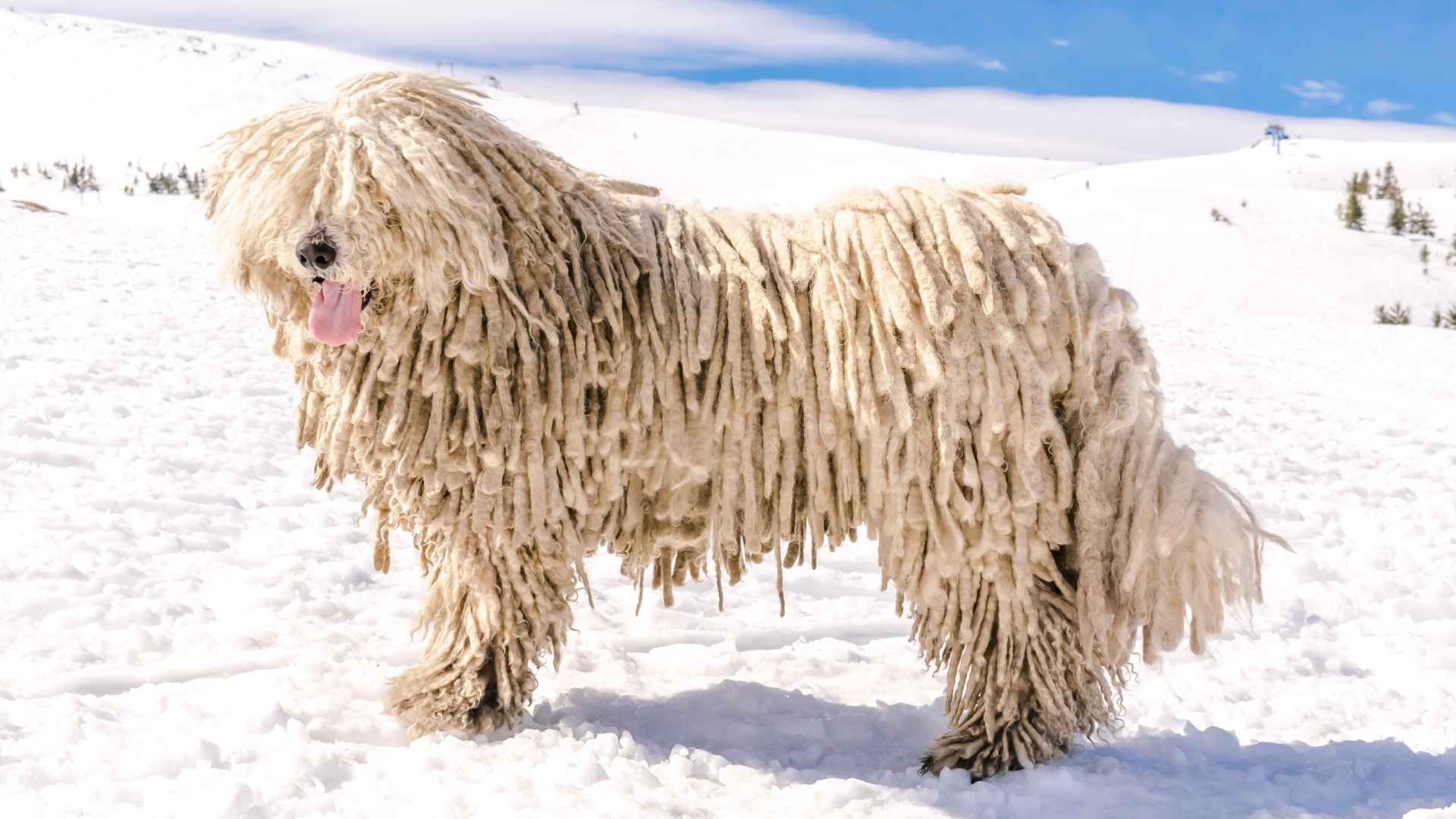Shedding is one of the biggest reasons people avoid large dogs. In fact, excessive shedding is a top complaint among new dog owners, especially those with big breeds.
The idea of fur-covered furniture and clogged vacuum filters scares off many families who might otherwise love the loyalty and presence of a giant dog. But what if you could have the size without the mess? Yes, they exist.
Certain giant breeds are known for their minimal shedding and surprisingly easy coat care. These aren’t dogs that leave a trail of hair everywhere—they’re clean, low-maintenance, hypoallergenic dog breeds, and ideal for homes that value tidiness.
If you’ve dreamed of a large, majestic companion without turning your home into a fur storm, there’s good news ahead. The following dogs that don’t shed might just be the clean giants you’ve been searching for.
Rarely Shedding Giant Dog Breeds
1. Komondor
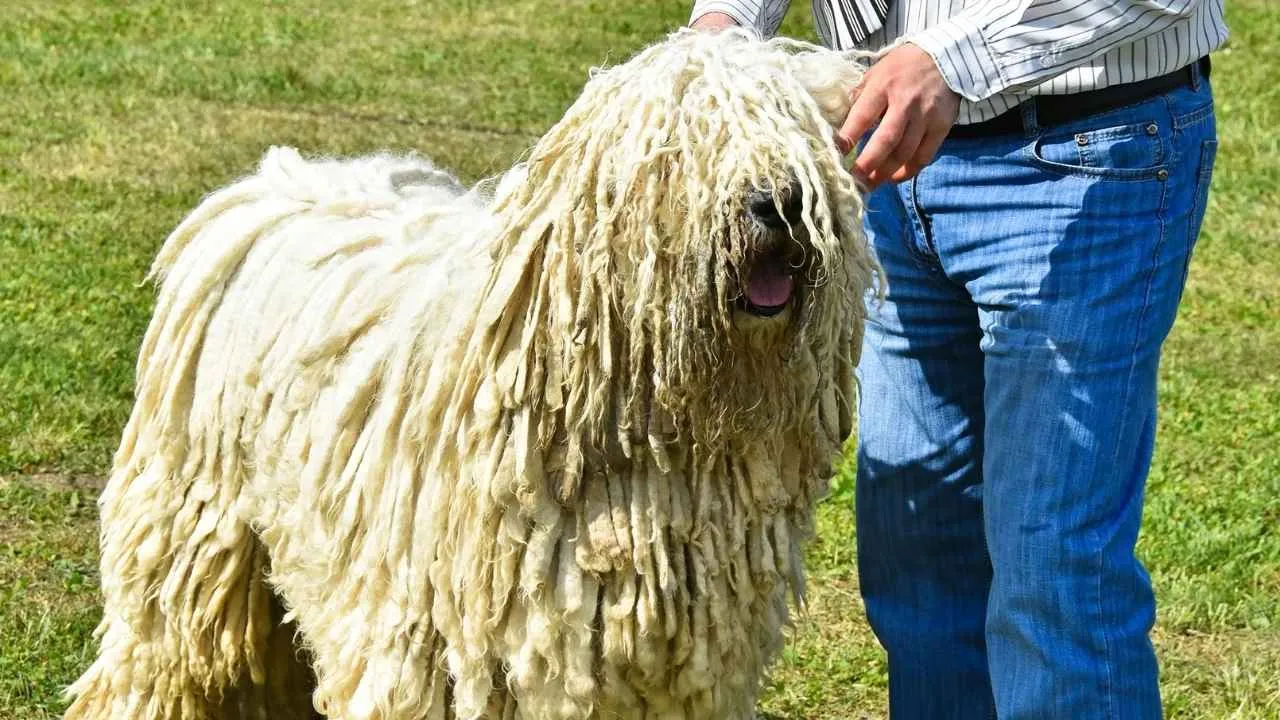
The Komondor’s coat forms naturally into long, corded strands that feel like thick ropes as the dog matures. This structure keeps loose hair trapped within the cords rather than spreading through the environment. Because of this dense matting, their shedding is almost nonexistent once the cords are fully developed.
Coat Management Is a Learned Process
Proper coat care requires separating cords by hand to prevent fusion and odor buildup. Most owners avoid brushing entirely and instead rely on bathing followed by towel drying and air drying. Grooming doesn’t remove much fur, which is why this breed is favored among those avoiding hair-covered homes.
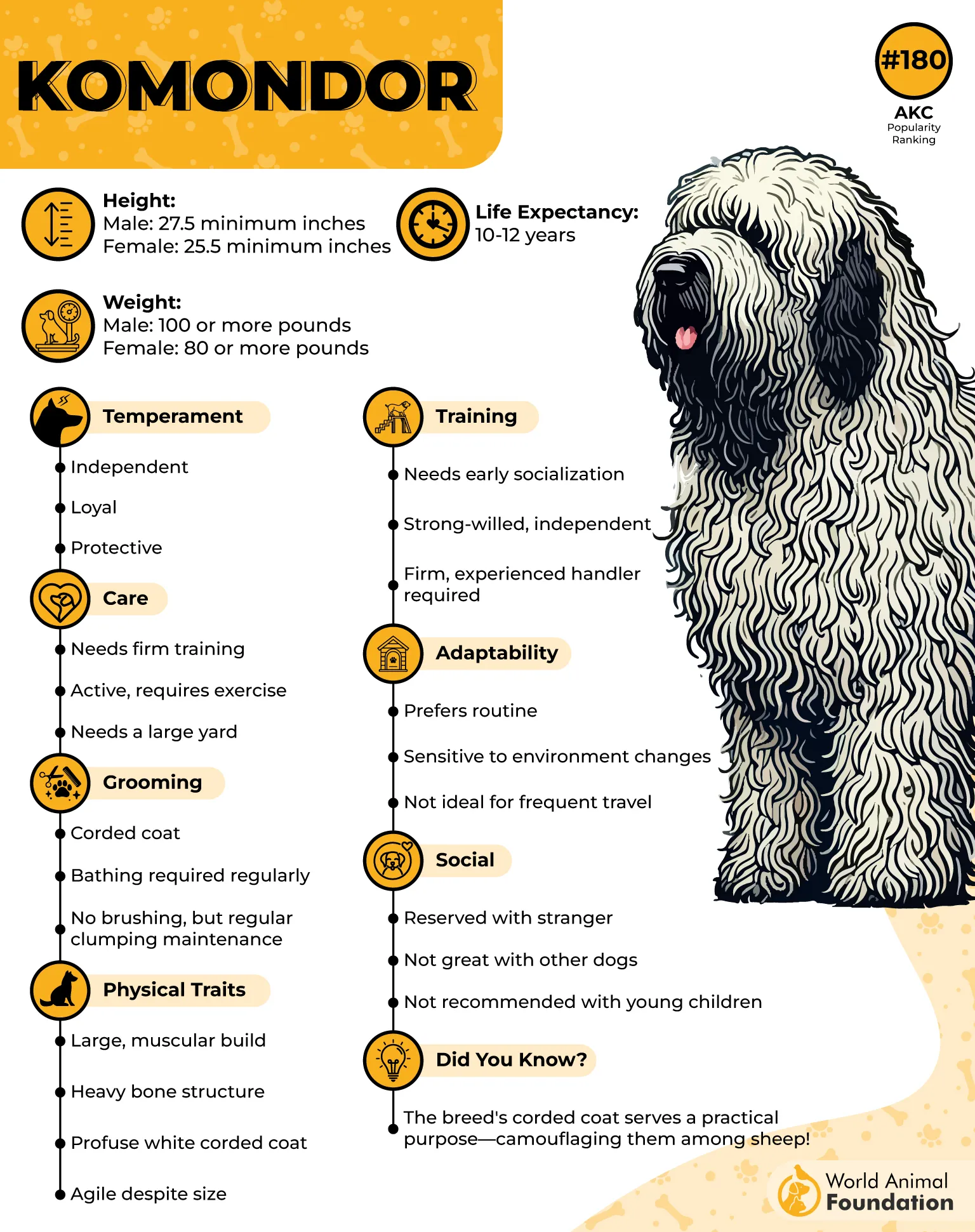
Originally Used for Livestock Protection
According to the AKC, the Komondor was historically used in Hungary to guard sheep and cattle from predators without human supervision. Their white color helped them blend in with flocks, but their silent guarding behavior is what earned them respect. Even today, they retain strong territorial instincts and quiet focus.
Heavy Build with Low Allergen Impact
Weighing well over 100 pounds, Komondors are among the most visually striking large dog breeds worldwide. Their coat doesn’t release dander as freely, which makes them an unexpected consideration for allergy sufferers. However, coat care needs are significant and require dedicated handling.
2. Irish Wolfhound
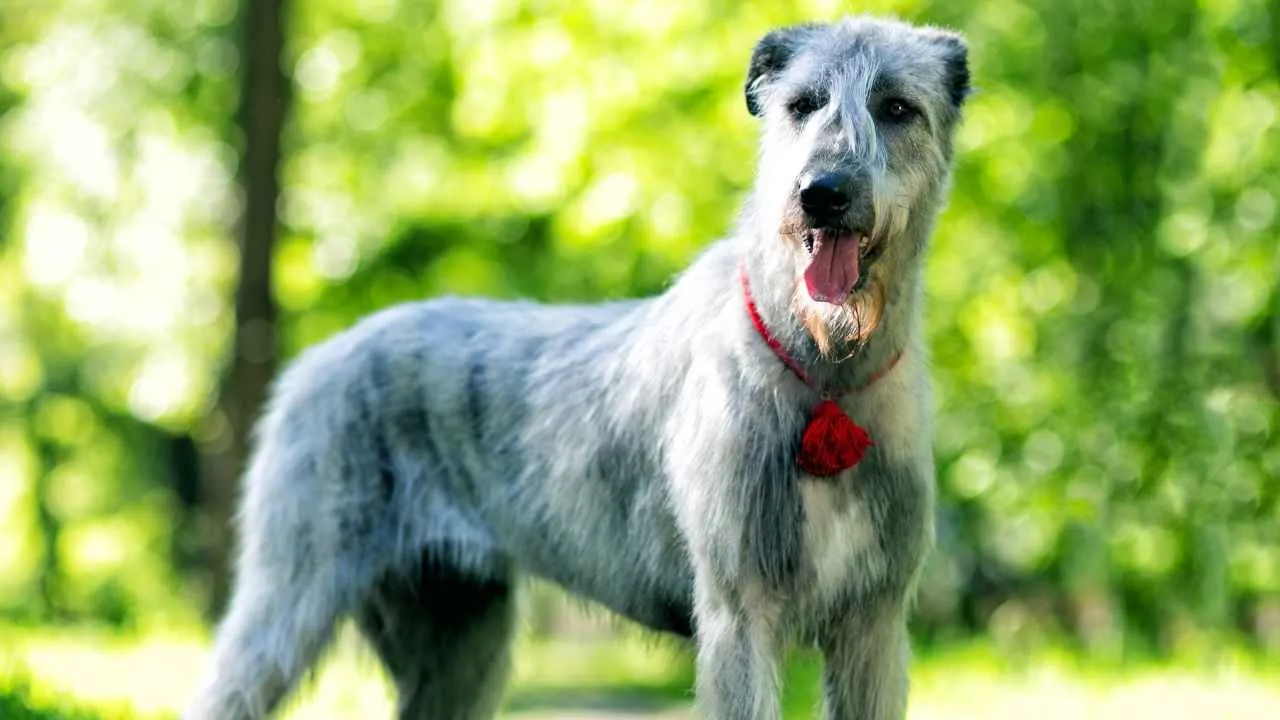
Irish Wolfhound has a wiry coat and is close-fitting, making it less prone to uncontrolled shedding. Though large, their coat doesn’t float or stick to surfaces like fluffier breeds. Any shedding tends to be subtle and seasonal rather than constant or excessive.
Texture Responds Well to Simple Maintenance
Because of the coat’s coarse nature, owners often use stripping combs to remove loose dog hairs every few weeks. Regular grooming prevents buildup and helps keep the texture healthy without contributing to heavy shedding. It also helps manage their natural oils without over-stimulating dander.
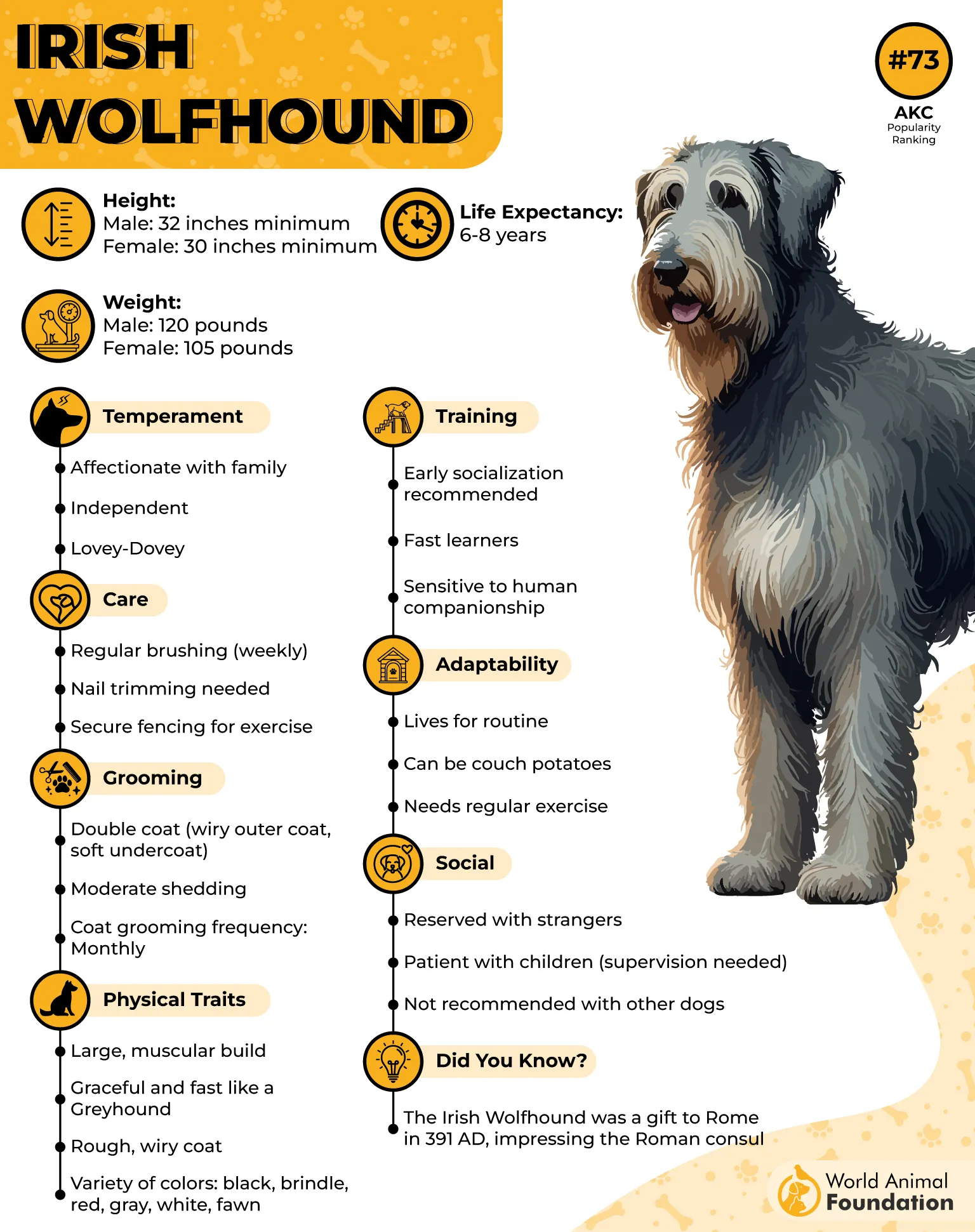
Historic Use as a Silent Hunter
The Irish Wolfhound was bred in ancient Ireland for wolf hunting and large game pursuit, often working independently. They rely more on vision than scent, which is rare among dogs of this size. Even now, their tall posture and smooth stride reflect this original function.
Gentle Nature in a Towering Frame
Standing as one of the tallest among big dogs, they’re known for their patient and calm behavior indoors, as per the PetMD. Their quiet habits make them surprisingly low-maintenance emotionally, especially in their adult years. They adapt well to soft flooring and are rarely destructive or loud.
3. Scottish Deerhound
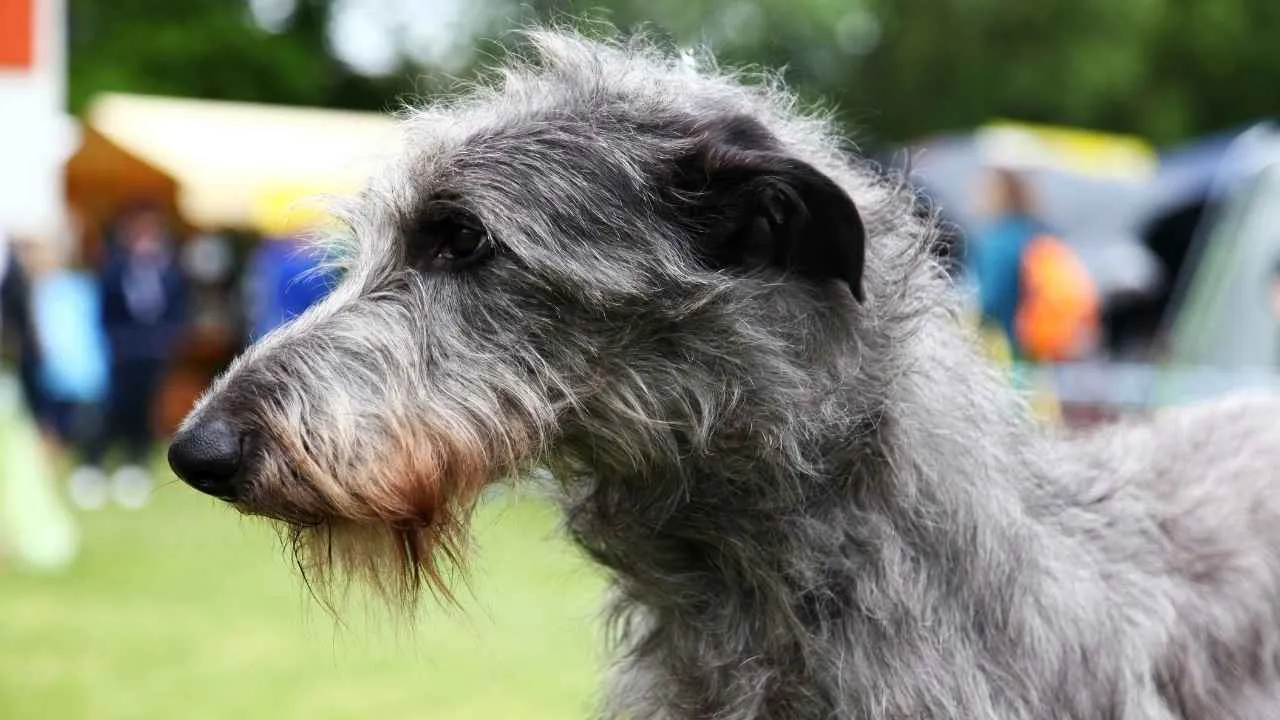
Scottish Deerhounds have a harsh, wiry coat designed to handle rough terrain and cold weather. The outer coat feels coarse, while the undercoat is thinner and softer around the belly and chest. This texture helps trap loose hairs, which contributes to their reputation as a low-shedding breed.
Minimal Grooming, Maximum Space
Their coat doesn’t require daily upkeep, but weekly brushing helps remove debris caught in the wiry strands. Bathing isn’t frequent unless the dog lives in a muddy area, though occasional hand-stripping helps maintain coat quality. These dogs do better in open spaces rather than in tight indoor settings.
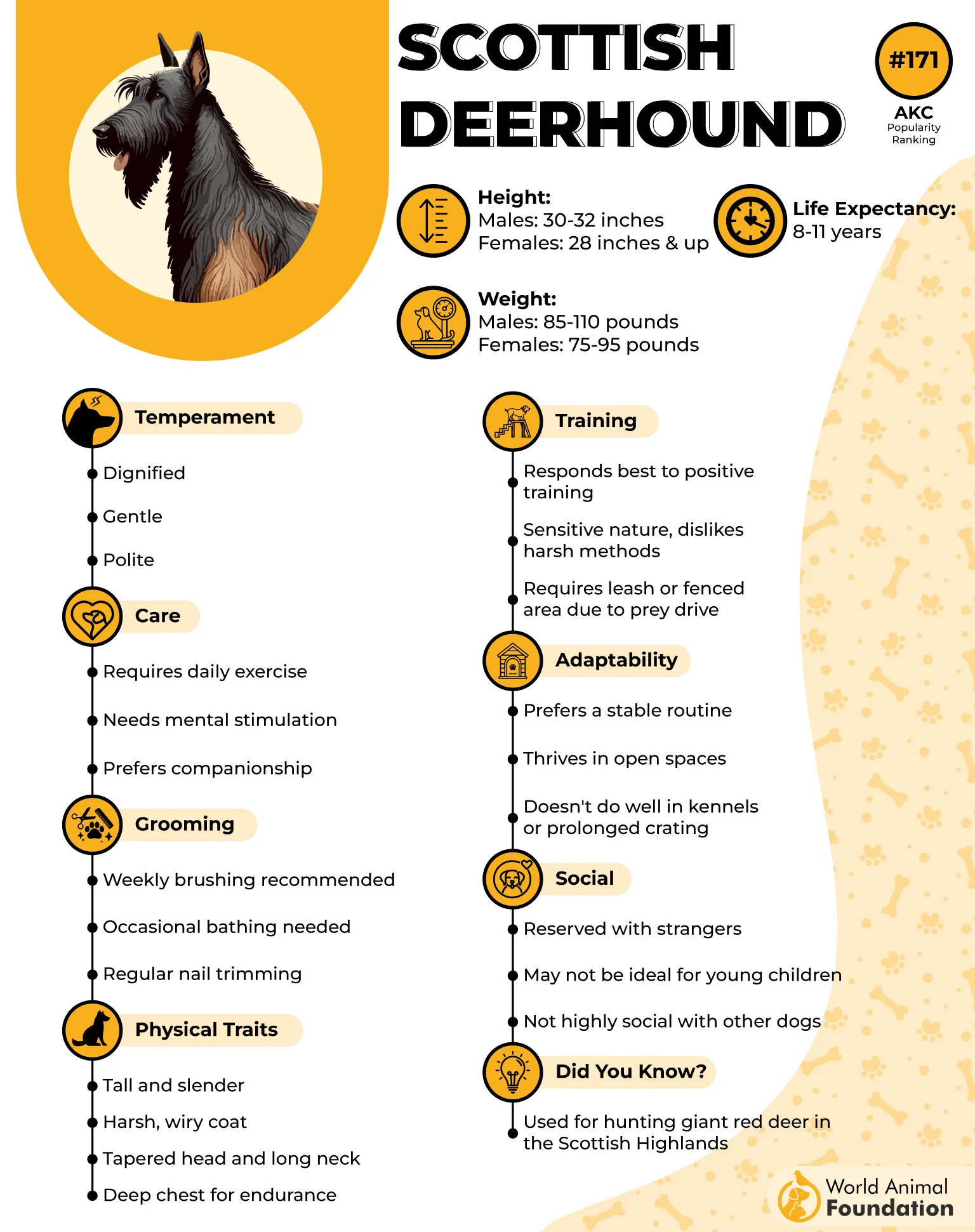
Strong Athletic History
Historically used in Scotland to chase and bring down red deer, they’re known for stamina and straight-line speed. Despite their size, they tend to move with surprising grace and don’t have a heavy-footed gait. Their lean muscle and deep chest reflect their hunting heritage.
Gentle Nature in a Tall Frame
Scottish Deerhounds are known to be calm and respectful indoors, often lounging quietly through most of the day. Many dog owners describe them as patient and surprisingly affectionate, given their imposing height. Their calm energy sets them apart from certain breeds with more excitable temperaments.
4. Mastiff
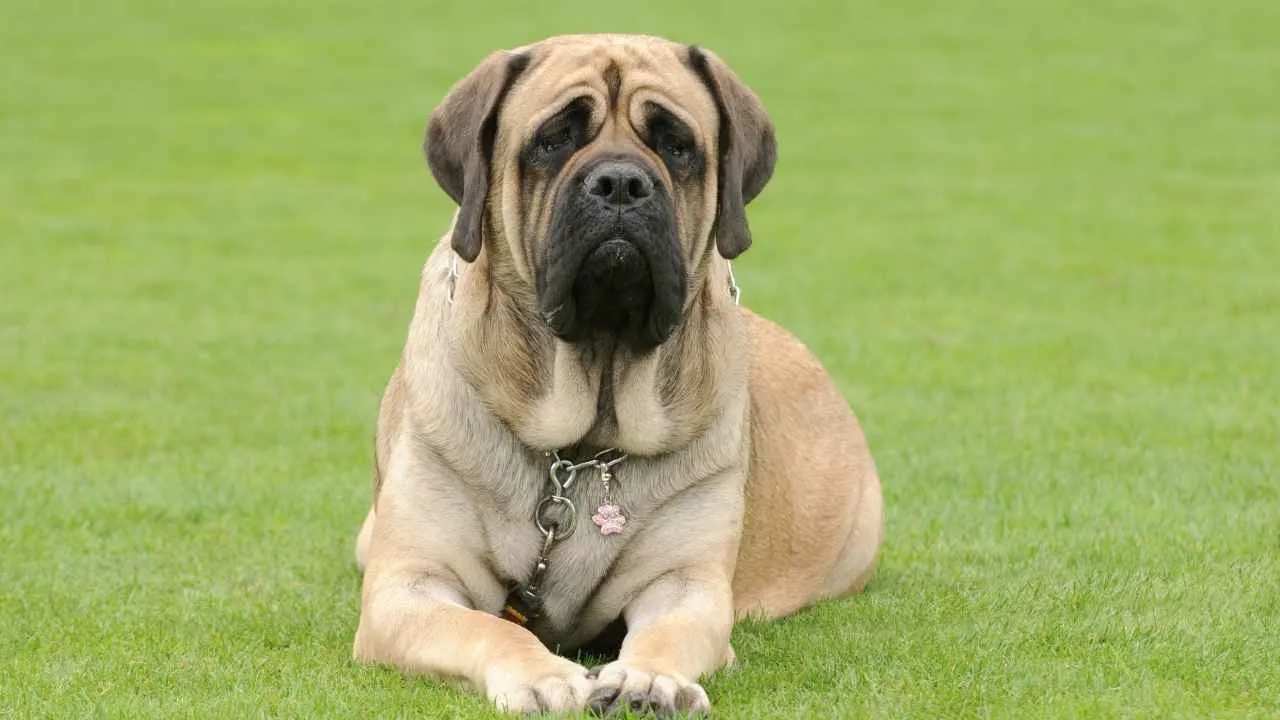
The Mastiff has a short double coat that stays close to the body and is relatively easy to manage. Although they are large, their dog shedding is often seasonal and light compared to what’s expected from their size. Weekly brushing is usually enough to keep the coat clean and low-shedding most of the year.
Grooming That Focuses on Simplicity
Most Mastiff owners find that a basic rubber grooming mitt works well to remove loose hair without overbrushing. Their coat naturally repels dirt and dries fast, making baths infrequent unless there’s a specific need. Their grooming routine is simple compared to many other heavy-coated breeds.
Calm Demeanor and Minimal Itching
Mastiffs are known for their calm, low-activity temperament, which also plays a role in their coat cleanliness. They don’t scratch or roll excessively, reducing dander and airborne hair. This trait lowers the risk of allergic reactions among people sensitive to certain breeds.
Massive Frame, Light Coat Maintenance
Weighing over 150 pounds, the Mastiff is one of the heaviest dog breeds worldwide. They were originally bred for guarding estates and large properties, which shaped their quiet confidence and tolerance for solitude. Despite their size, their coat needs remain manageable and low-effort.
5. Dogue de Bordeaux
This breed has a short, fine coat that lies close to the skin and doesn’t shed in large amounts year-round. Their fur tends to loosen lightly during seasonal changes, but visible shedding remains low. Most of the dead hair comes out during baths or towel rubdowns rather than daily grooming.
Coat Maintenance Is Low, But Targeted
Despite the breed’s size, their coat needs basic care that even first-time pet owners can handle. A soft-bristle brush once a week helps lift dust and loosen hair without irritating their skin. Bathing once a month is usually enough to manage coat oils and odor.
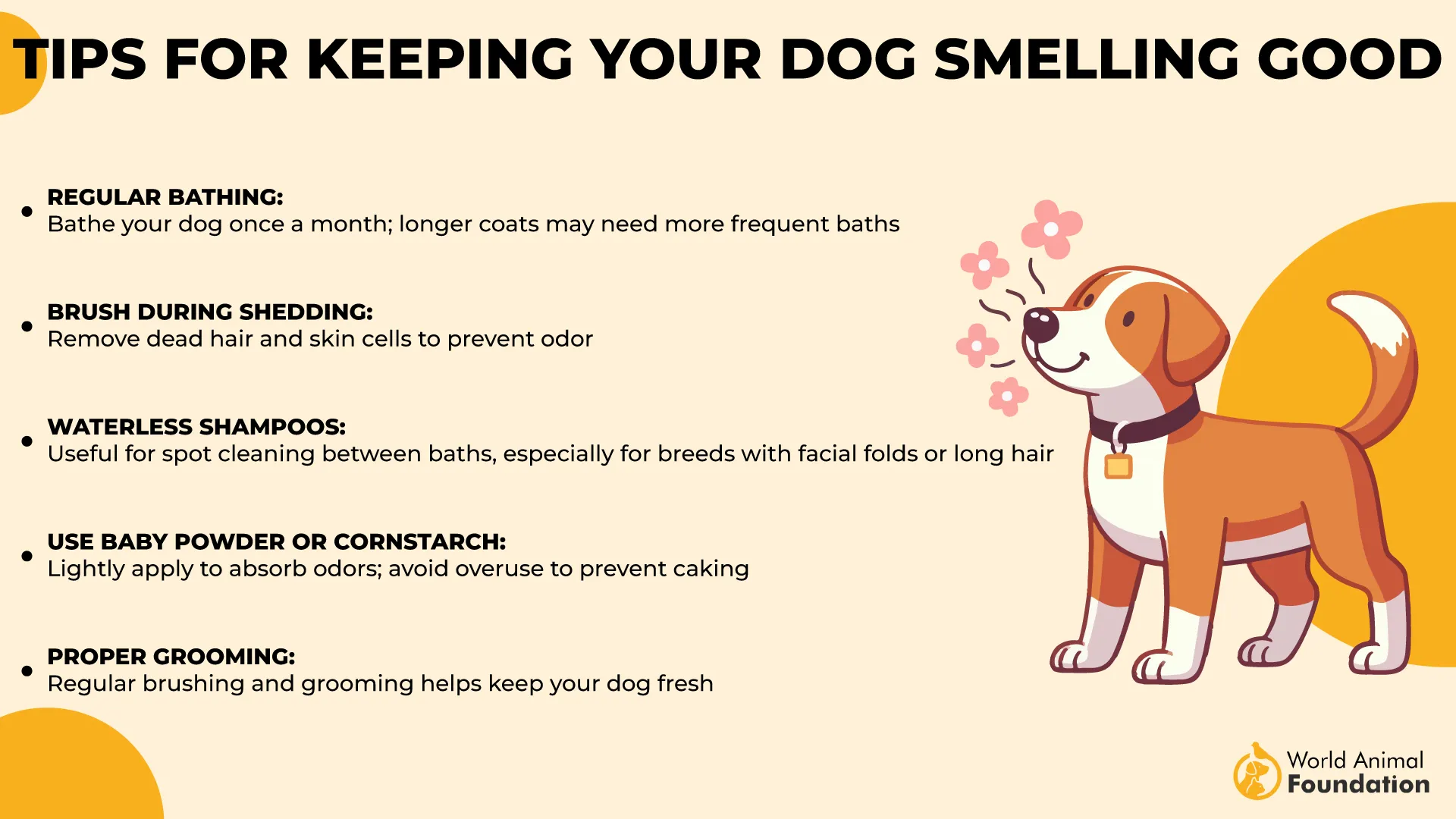
Exercise Plays a Role in Skin Health
The Dogue de Bordeaux benefits from steady walks and strength-building play sessions. Their loose skin folds can trap moisture, which is why regular exercise also contributes to circulation and coat condition. The activity also reduces stress-driven scratching, especially around the neck and underarms.
Skin Folds Require Selective Attention
While the coat itself doesn’t need a professional groomer, the skin folds around the face need regular wiping to avoid bacterial buildup, as PDSA claims. A dry cotton cloth or vet-approved wipes are often used by experienced owners. These folds can sometimes become irritated in warm, humid climates.
6. Giant Schnauzer
Giant Schnauzers have a double coat — a wiry top layer and a dense undercoat — that holds in shed hair rather than releasing it. Regular stripping or trimming keeps the coat manageable and reduces hair fallout. When maintained properly, they’re one of the few non-shedding breeds in their size group.
Grooming That Matches the Coat’s Structure
Hand-stripping is preferred by breed enthusiasts because it removes dead hair without damaging the texture. If clipped instead, the coat becomes softer but may hold more moisture or dirt. Maintenance schedules are strict, with grooming every 4–6 weeks recommended for coat health.
Powerful Build with Sharp Awareness
These dogs are alert, muscular, and driven — traits shaped by their history as German working dogs. Their strong guarding instincts require proper training and early social exposure. When well-directed, they’re confident without being overly dominant around other dogs.
Balanced Temperament in the Right Hands
Despite their size and working energy, they often form deep bonds with their families. Their affectionate nature is especially visible indoors, where they enjoy close presence and physical contact. Many consider them loyal companions who thrive on structure, attention, and shared routines.
7. Briard
Briards have a dry outer coat and dense undercoat, which together trap shedding fur before it falls. Shedding happens in low amounts and is mostly noticeable during grooming sessions. Their coat naturally catches debris and hair, which is why regular brushing is essential.
Grooming Is an Ongoing Commitment
Brushing a Briard takes time due to its thick texture and wave-like pattern, which forms tangles quickly. Most owners groom several times a week to prevent matting near the ears, legs, and flanks. Their coat requires patience, but it responds well to proper tools and technique.
Independent but Loyal Temperament
They are deeply attached to their families and tend to develop strong bonds with one or two individuals. Bred for herding, they still show behaviors like circling or nudging to guide movement indoors. Training must be calm and consistent to match their smart, sometimes stubborn nature.
Physique and Presence
Briards typically weigh between 70 to 100 pounds, making them one of the more agile big dog breeds with a herding background. Their sharp hearing and confident stance have been valued in both military and farm settings. They’re an appealing choice for experienced dog lovers who enjoy working with a strong-willed breed.
Conclusion
Not all large dog breeds shed excessively or leave your home covered in hair. As you’ve seen, some giant breeds that don’t shed offer clean coats, calm personalities, and surprisingly low maintenance.
While no breed is completely free from dander or a dog’s saliva, many of these rarely shedding giants are great choices for people sensitive to dog allergies. A few even overlap with what many consider large hypoallergenic dogs, especially those with a curly coat that traps loose fur.
Even so, routine grooming and frequent brushing help keep coats healthy. If you’ve been searching for a furry friend who brings presence without the mess, one of these big hypoallergenic dog options may be the perfect match.


